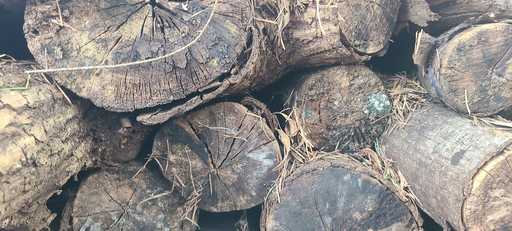Habitat Project: Wildlife Log Pile
What is a Wildlife Log Pile?
A wildlife log pile is as simple as the title suggests, it is a pile of logs, branches and leaves. This pile of debris serves to provide food and shelter for insects and wildlife. Essentially you are creating the same conditions as a rotting tree that has fallen to the forest floor. The decomposing materials provide food for insects. As insects begin to take up refuge in the pile and so does wildlife such as birds, mammals, reptiles and amphibians. To learn more about why dead wood is beneficial to wildlife check out this article from Penn State.
Constructing a Wildlife Log Pile
Location
First step is to select a location. Depending on what wildlife you are trying to encourage, location is important. If you are looking to encourage moisture loving wildlife such as frogs, toads, and salamanders, find a spot in your yard that is shady and located near a water source. The shade will help keep the log pile moist for longer periods of time. If you are looking to encourage attracting native solitary bees and reptiles consider finding a sunny place that will allow the log pile to warmer even in the winter.
Supplies
Once you have found your location you will need to find your supplies. Collect fresh and rotting logs, sticks of various sizes, leaf litter. You might also find it help full to have a pair of loppers or a hand saw to help break larger pieces of wood down to fit better into the pile.
Construction
When you have collected your supplies you can start constructing the pile. You will want to construct the pile in a pyramid structure to maximize the stability. How large you build it depends on your location. Wildlife log piles can be small or large, but they both are beneficial. Start by laying larger logs as the base of the pyramid. you can then use the sticks to fill in the smaller gapes between the logs. I like to also stuff leaves into these cracks and crevices. You then repeat these steps with progressively smaller wood pieces untill you have build your pile to the desired height. If rain is not expected it is good to water the pile to help start the break down process and build up some moisture into the pile. The decomposition and moisture is attractive to insects.
Additional Resources
- Listen In the Woods Episode 39 with the Forestry and Natural Resources Program at Oregon State University
- Article from the Northwest Natural Resource Group about Keeping Dead Wood and Creating Wildlife Habitat Piles

